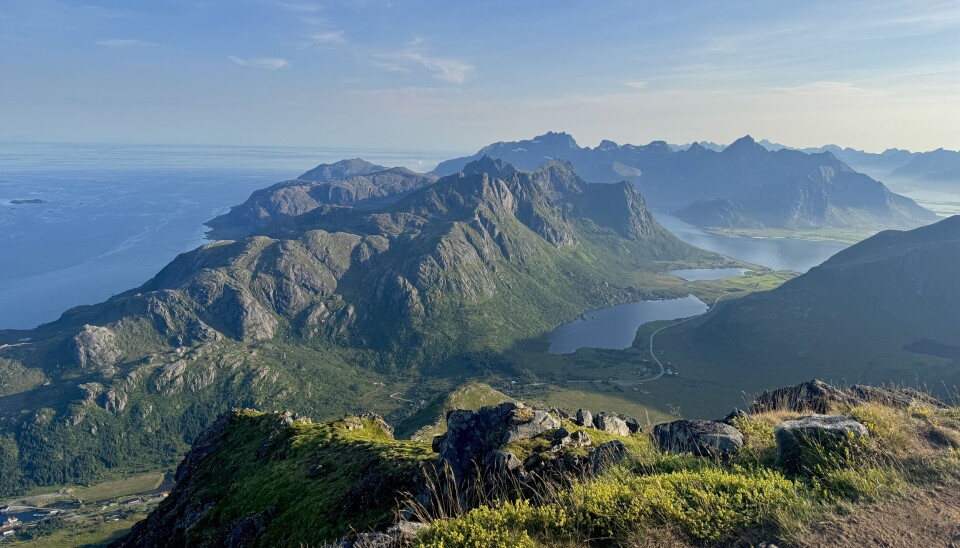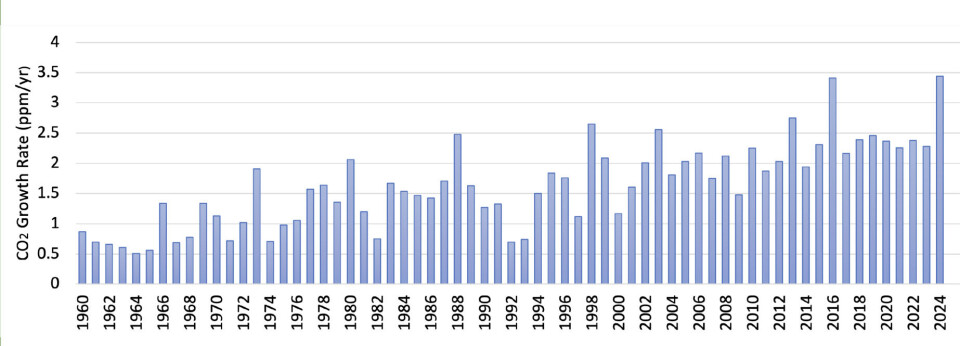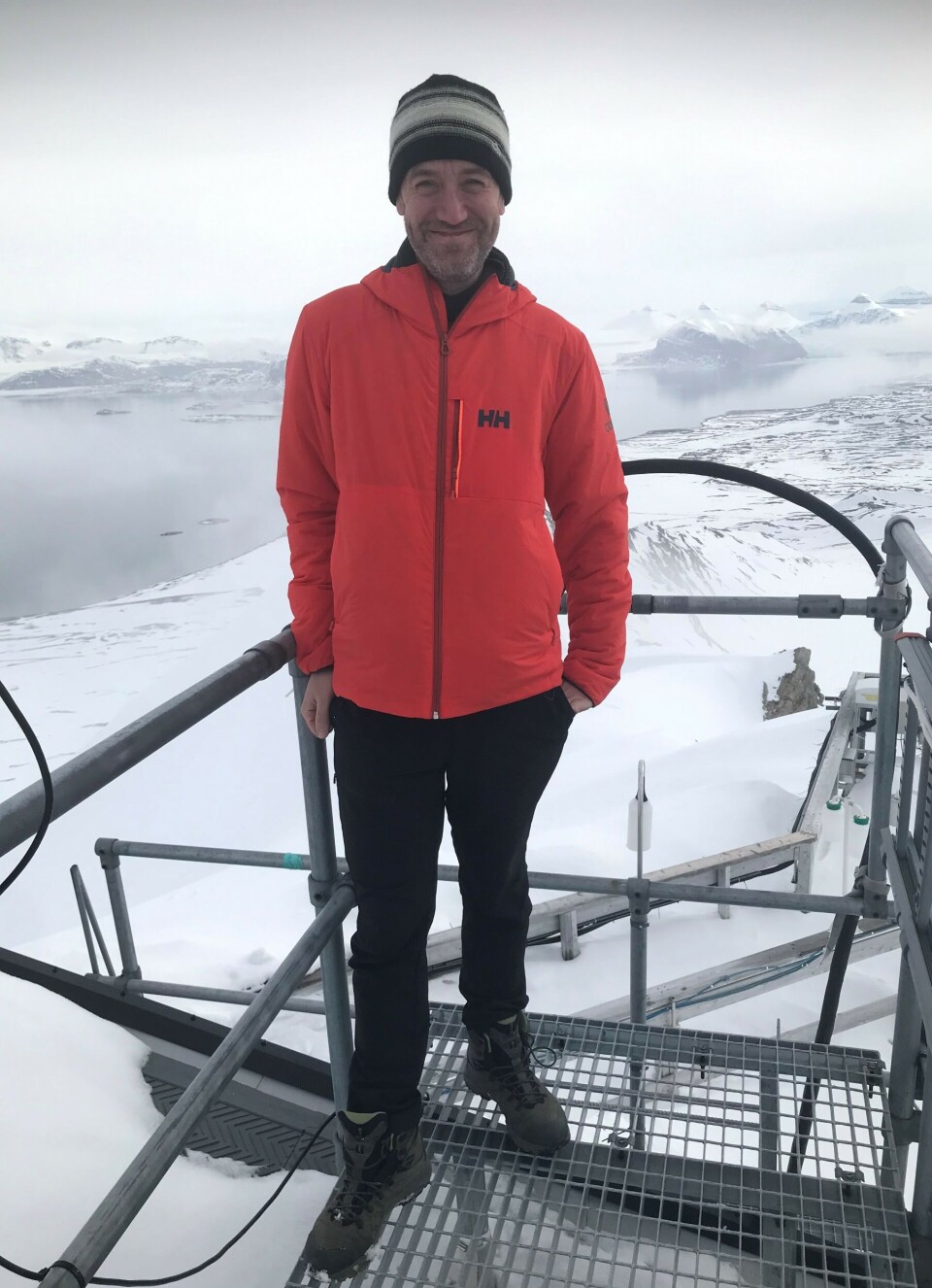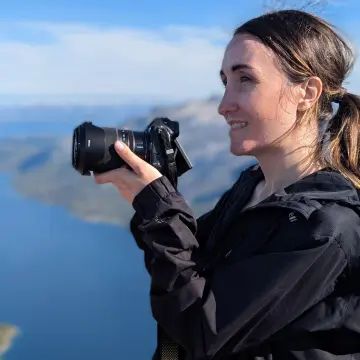
Record levels of greenhouse gases in the atmosphere. Actions needed now, Greenpeace says
“Our leaders must start doing their job: cutting emissions, fast,” the head of Greenpeace Norway told the Barents Observer.
In 2024, atmospheric carbon monoxide (CO) levels “showed an anomalously high seasonal peak… mainly due to exceptionally high fire emissions in South America”, the World Meteorological Organisation emphasises in the report. The CO emitted by wildfires is oxidized to produce carbon dioxide (CO₂).

“Over the past 15 years, the Amazon has been significantly impacted by deforestation … Forest loss causes a reduction in precipitation and an increase in temperatures, intensifying dry-season climate stress…” - the report says.
From 2023 to 2024, CO2 in the global surface atmosphere increased by 3.5 ppm. Globally averaged CO2 at the Earth’s surface reached 423.9 ppm in 2024.
In October 2025, the atmospheric CO2 concentration is expected to be around record high 425 ppm.
Half of the CO₂ released by human activities, such as through burning fossil fuels, enters the atmosphere. The other half is absorbed by plants and the oceans. However, in the context of global warming, the oceans cannot hold as much CO₂ anymore. Additionally, rising temperatures dry out plants and cause forest fires. This impacts the climate all over the planet, including the Arctic:

“These temperature rises occur much faster in the Arctic than elsewhere, leading to profound regional impacts such as melting ice sheets, disrupted ecosystems and fisheries, and thawing permafrost that threatens infrastructure,” Dr. Stephen Platt, a senior climate scientist at the Climate and Environmental Research Institute NILU told the Barents Observer.
Dr. Platt said that similar to the global findings presented in the WMO report, concentrations of greenhouse gases measured at NILU’s observatories, including the Zeppelin Observatory in Ny-Ålesund, Svalbard, reached record-high levels in 2024.
“This is a cause for concern, as meeting global climate targets such as the Paris Agreement goal of limiting warming to well below 2°C above pre-industrial levels requires that the rate of increase in greenhouse gas concentrations slows down, not accelerates,” Dr. Platt said.
“Current CO₂ emissions to the atmosphere will continue to impact global climate for millennia, and ongoing CO₂ emissions will ensure that warming continues indefinitely,” the report emphasizes. “.... achieving net-zero anthropogenic CO2 emissions must be the focus of climate action…”
Climate activists have jumped on this new report, calling for more action from politicians to combat these rising emissions.
“The WMO-report is yet another stark reminder that our leaders must start doing their job: Cutting emissions, fast. The politicians have the power and responsibility to do so on behalf of us all,” Frode Pleym, the head of Greenpeace Norway told the Barents Observer.

“Norway is unfortunately a sad example of the lack of action: we are cutting domestic emissions at a scarily slow pace. The recent state budget is a betrayal of both the environment and future generations. Instead of cutting emissions and protecting nature, as most Norwegians want, the government is spending billions on fossil fuel subsidies and paper decorations. It is pure symbolic politics disguised as climate policy.”
What would it mean for the future of the Arctic if the CO₂ levels continue to be so high?
Dr. Stephen Platt from NILU reported that rising temperatures and a rapidly changing landscape are already transforming life in the Arctic:
“As permafrost melts, roads, buildings, and pipelines are at risk, while communities that rely on local ecosystems will have to adapt to new conditions, - he said. “At the same time, shrinking sea ice is opening new shipping routes and areas for resource extraction. Combined with recent geopolitical tensions, these changes give the Arctic increasing strategic importance.”














